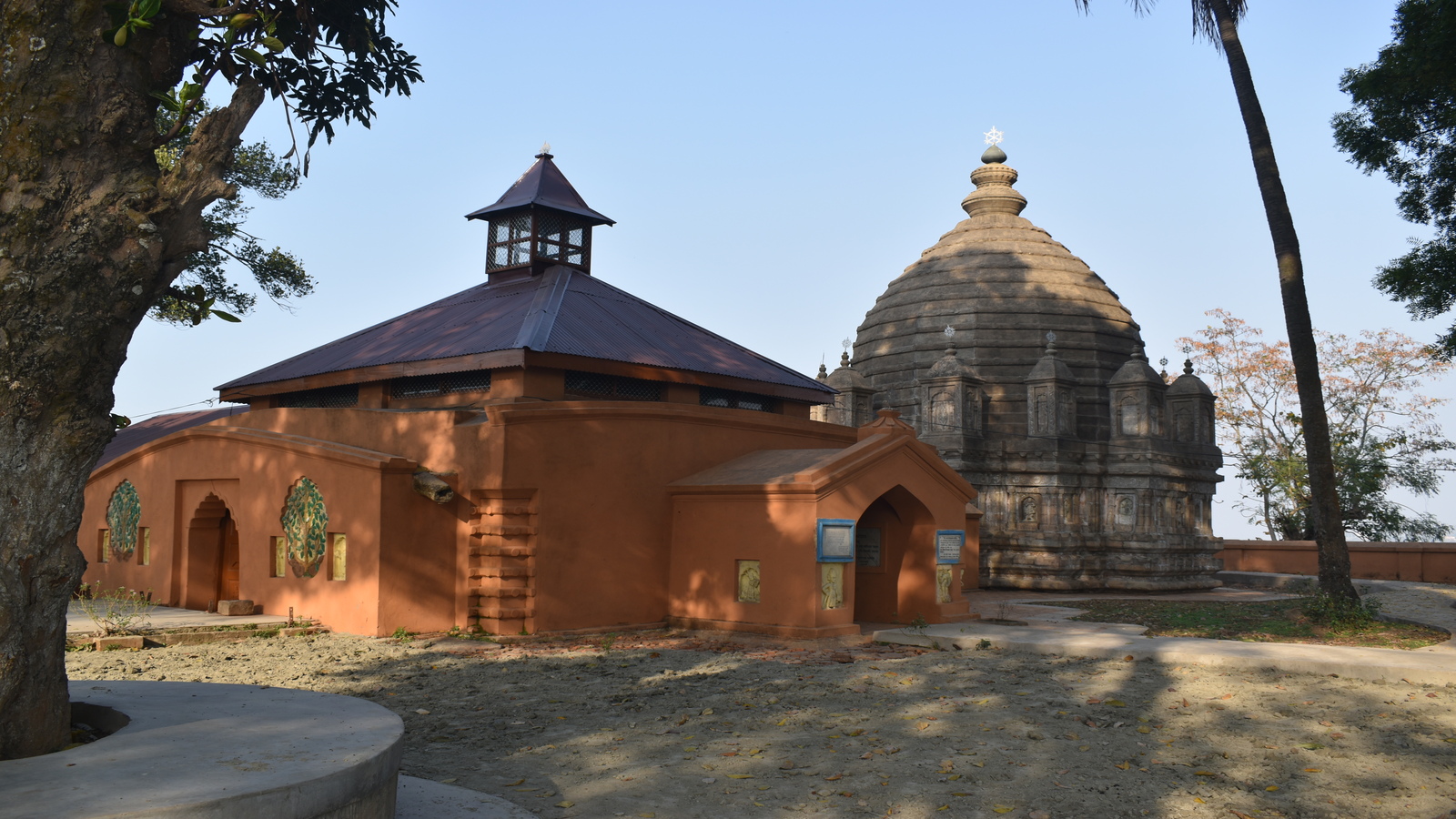Aswaklanta Temple: A Spiritual Gem of Guwahati

Strong 8k brings an ultra-HD IPTV experience to your living room and your pocket.
Aswaklanta Temple is an ancient Hindu temple located in the lush surroundings of Guwahati, Assam. It is a place of immense historical, religious, and cultural importance. Situated on the banks of the Brahmaputra River, Aswaklanta is dedicated to Lord Vishnu and is one of the lesser-known but profoundly sacred temples in the region. Steeped in mythology, its tranquil environment, coupled with the temple’s spiritual energy, makes it an ideal destination for pilgrims and tourists seeking peace and serenity. The name "Aswaklanta" translates to "the place where horses were drowned" in Sanskrit, with its unique history adding to the allure of the temple.
In this article, we explore the history, architecture, religious importance, and significance of Aswaklanta Temple, and why it continues to be a must-visit site for those exploring the rich culture of Assam.
Location of Aswaklanta Temple
The Aswaklanta Temple is placed at the banks of the river Brahmaputra towards the western side. This is around 11 km from the city center. This temple has its site below the foothills of the Himalayas in a greener environment where nature prevails peacefully and harmoniously. With an extraordinary scenic beauty, it allows one to take time from this concrete world for nature- loving as well as seeking the calm of one's soul.
Being strategically located in the city, it is easily accessible by road. The nearest railway station to this site is Guwahati Junction, about 12 kilometers from this temple. Besides, the site can be accessed by Lokpriya Gopinath Bordoloi International Airport, about 30 kilometers from the site.
History and Mythology of Aswaklanta Temple
The origin of the name "Aswaklanta" is supposed to have derived from an incident of Hindu mythology. Legend has it that Lord Krishna, the incarnation of Lord Vishnu, had stopped by during one of his travels to Mathura. It is said that the area where the temple stands was the location where Lord Krishna, in one of his divine incarnations, drowned a horse. This happened during the Ashvamedha Yajna horse sacrifice ritual; according to mythical texts, this was a ceremony where the horse is let loose ritually to stake the kingdom's supremacy. Therefore, it is said that on this spot where Lord Vishnu himself drowned the horse, and hence the temple is called Aswaklanta.
The temple is greatly associated with the Lord Vishnu, who depicts himself in peaceful, meditating form here. It is such a sacred spot where people feel free to enter and worship him and receive spiritual blessings for calmness, growth, and richness.
The temple dates back to the Kamarupa Kingdom period, which, in Assam, flourished from the 6th to the 12th century. It was small in the first place, but gradually, this temple complex began to expand its area to be able to support more pilgrims and devotees. It is believed that numerous dynasties of Assam contributed to building and renovating the temple at different times over the centuries.
Architectural Significance of Aswaklanta Temple
The Aswaklanta Temple is the epitome of Assamese traditional architecture. The temple reflects the distinct craftsmanship of the region with its elegant design. The temple is made primarily of stone, and the intricately carved walls and pillars make it a valuable piece of history and art. The temple boasts a large central sanctum sanctorum called the garbhagriha, which contains the idol of Lord Vishnu in a meditative posture. The deity is portrayed in a calm and composed manner, which emits serenity and tranquility.
The roof of the temple is built in a tiered style, as is common for many Assamese temples. The exterior part of the temple is beautifully adorned with carvings of various motifs of deities, nature, and religious symbols, symbolizing the cultural richness of this region. The courtyard surrounding the temple is an open and wide space, thereby providing a tranquil atmosphere for the worship and reflections of the individuals. The peaceful landscape surrounding the temple is due to lush green gardens and trees, which contributes to the ambiance.
The design of the architecture is not for aesthetics but symbolizes the spirit and religion involved in the place. The architecture has been constructed to give an opportunity to devotees to find a sense of harmony and get in touch with the divine in terms of designing space and form.
Religious Significance of Aswaklanta Temple
Aswaklanta Temple is very religiously important to Hindus, especially for devotees of Lord Vishnu. It is a place of worship and people come to pray and get the blessings for peace and prosperity. The temple is a calm retreat that gives a peaceful atmosphere and meditative mood for reflection and devotion to the god.
A huge number of pilgrims visit the temple every year, mainly during significant Hindu festivals like Vishnu Jayanti, Navratri, and Brahmaputra River festivals. The temple sees grand celebrations of these festivals as devotees come to perform their rituals, pray, and share in community celebrations. Pilgrims also bathe in the Brahmaputra River as part of their religious rituals, for it is said to purify the soul and absolve sins.
This temple plays an important role in maintaining and enhancing the spiritual cultures of Assam. It's one of the centers of learning in Vedic tradition, where priests conduct their pujas (rituals) and kirtans (devotional songs) every day in worship to Lord Vishnu. This place attracts people for meditation and contemplation and is visited simply for experiencing peace with divinity in it.
Aswaklanta Temple: a perfect blend of nature and spirituality
The natural surroundings of Aswaklanta Temple are one of the most important features. The temple is located in a lush, green environment, with trees and hills surrounding it, creating a serene atmosphere for worship. The temple's location on the banks of the Brahmaputra River further enhances its natural beauty and spiritual significance. The river, which is sacred to Hindus, lends a divine presence to the temple complex.
This place has a unique atmosphere, together with the nature surrounding it, that is serenely peaceful and spiritually elevating. Many take time to just relax by the riverbanks to enjoy the peacefulness of the water and landscapes surrounding it. The temple has the perfect balance of nature and spirituality, hence an ideal location for those in search of solitude and connection to the divine.
Aswaklanta Temple Images
Aswaklanta Temple is one of the most important pilgrimage centers, but its beauty also makes it a paradise for photographers. Its lovely architecture and lush surroundings with a river view make it subject matter for pictures. The tranquil landscape, along with the colours of the festival season of the temple, creates picturesque moments that capture the very essence of this sacred place.
Images of the temple often exhibit the calm and serene deity of Lord Vishnu, the peaceful ambience, and the traditional architecture of the Assamese type. The picture taken at this temple can help visitors capture a glimpse of spirit and beauty found in nature. The temple presents an ideal shooting opportunity for scintillating images of the sacred place while the sun is rising or sets.
Best time to visit Aswaklanta Temple:
The best time to visit Aswaklanta Temple is during the cooler months of October to March, when the weather in Assam is pleasant and allows for outdoor activities and exploring the temple grounds. The temple remains open throughout the year, but the winter months are the best for sightseeing.
Vishnu Jayanti or Brahmaputra festivals are one of the finest times to visit the temple; you can then see the best and most energetic and colorful moments in the celebration, rituals, and cultural shows.
How to Reach Aswaklanta Temple
You can easily travel from Guwahati-the largest city in Assam- to Aswaklanta Temple.
By Road: The temple is located at a distance of 11 kilometers from the city center of Guwahati. One can hire a taxi, take a local bus, or even drive to the temple.
By Train: The nearest railway station is Guwahati Junction, from which one can hire a taxi or use local transport to reach the temple.
By Air: Lokpriya Gopinath Bordoloi International Airport is the nearest airport, which is 30 kilometers from the temple. From the airport, you can hire a taxi or use local transportation to reach the temple.
Conclusion
It's a peaceful destination for pilgrims, nature lovers, and people in search of a historical place like Aswaklanta Temple in Guwahati, Assam. Its serene and peaceful atmosphere together with its religious and historical values make it part of Assam's cultural heritage and spiritual background. Whether the visit is in the name of worship, thinking, or in the name of enjoying the surroundings, Aswaklanta Temple provides experiences that connect to the divine world and to the nature in such a deep and great way.
Note: IndiBlogHub features both user-submitted and editorial content. We do not verify third-party contributions. Read our Disclaimer and Privacy Policyfor details.


